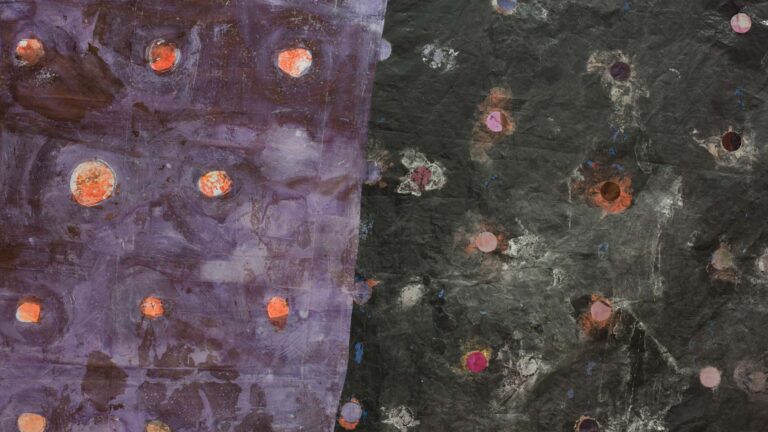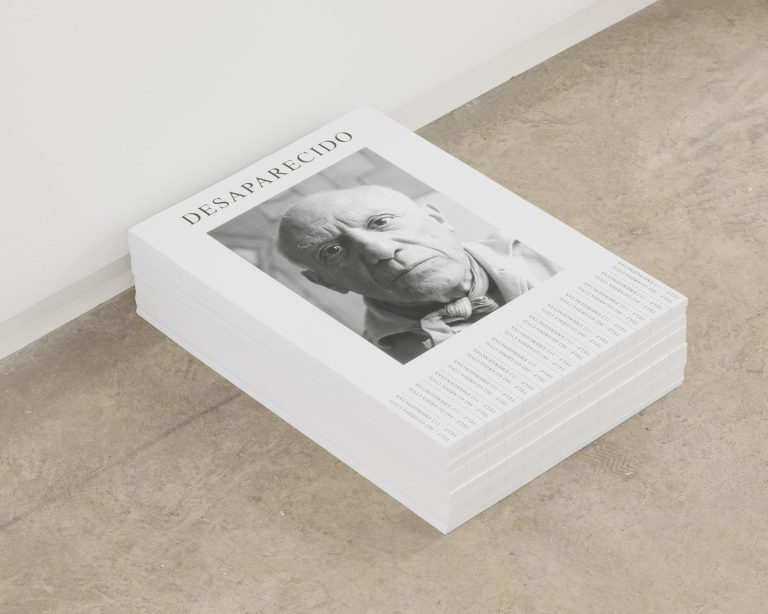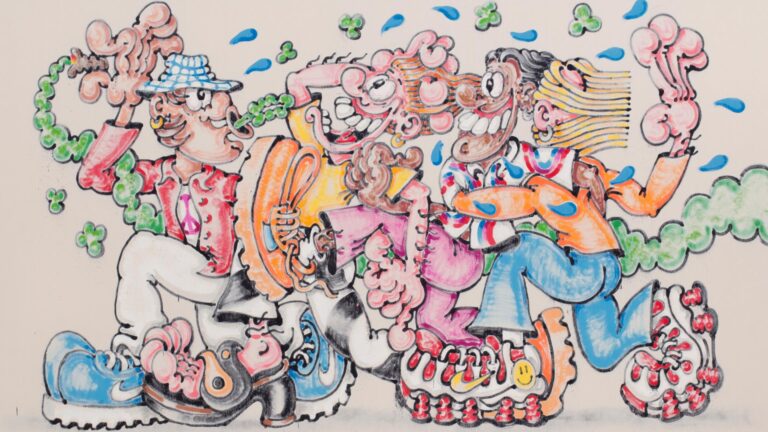
Artist: André Romão
Exhibition title: Iron, Flesh, Abstraction
Curated by: Rosa Lleó and João Laia. The Green Parrot
Venue: The Green Parrot, Barcelona, Spain
Date: January 16 – April 17, 2015
Photography: Roberto Ruiz Arguedas. Courtesy of the artist and The Green Parrot
Different voices crossed and blent in a continuous verbal flow… And as you know, speaking is a
form of self-eroticism, and therefore of pleasure, and that was clear as you listened to Radio Alice.
(…) Voices without images, voices that intensified in the dark.
Interview to Clemens Gruber, 1977 l’anno in cui il futuro cominciò , Franco Berardi (Bifo) e Veronica Bridi (eds.), Fandango libri, Roma, 2002
The work of André Romão investigates the positioning and symbolism of the individual within historical and political contexts, while analysing the relevance and impact of the historical heritage from western contemporary culture. By underlining a subjective layering, this complex embedding of the past in the present opens up the possibility of a performative reshaping of history and of an interaction between historical fact and individual interpretation. In doing so, Romão is signalling his belief in history and visual culture as political stages and in their performative use by the members of a social, political and historical body. The body is therefore a key figure in his practice, and is conceived as an instrument for individual and collective conduct, its political relevance mapped by juxtaposing past instances with contemporary events. Scavenging cultural and economical systems of production and interaction and exploring the confrontation of macro and micro structures in contemporary society, Romão presents a research on economics, eroticism, violence, and appropriation whose references range from classical antiquity to contemporary advertising, or from political history to pop design.
The show at The Green Parrot is centered around two works, the newly commissioned Ghost sitting on bar stool (2015) and Dead blink (2014).
Ghost sitting on bar stool belongs to a set of texts in which Romão becomes the ghostwriter for a ghost, delegating all forms of authorship to the figure. Following the line of its previous apparitions, at The Green Parrot a room will be left empty and scarcely lit with only a bar stool (a Duplex, designed in Barcelona in 1986 by Javier Mariscal), a microphone with its stand, some cables, a speaker, and a pre-recorded track that embodies the presence of a ghost addressing the audience. The new text builds on the tension between material and immaterial forms of corporeality, the ghost personifying the systems and invisible abstractions that act upon bodies. The text reclaims the body as a living organism, mixing it with a number of references to articles and pamphlets published in Italy during the Autonomia process. The stool, heavily inspired by Italian post-modern design, is placed in a tense relation with the text, becoming almost reactionary in its referencing to a specific historical shift. In this way, Romão blurs the divide between social experiments of communality and self-knowledge and the hedonistic hyper-social sort of socialization that followed. It is unclear how the destruction of social subjects and the claiming of one’s own body was transformed into body culture; the bar becoming one of these vague places in which desire was articulated.
Dead blink is a 35mm slide projection of 81 colour slides of the same image: an empty eye of a bronze roman sculpture. The image, photographed in Museo Nacional Romano – Villa Massimo in Rome, shows a dark hollow space where an ivory eye once stood, long gone due to the fragility of the organic material. The slideshow of the images is programmed in a succession that mimics the speed of the human eye blinking movement, creating a ghost-like presence, an artificial shutter of an inanimate object.
Both works revolve around the idea of how looking and being looked at may be seen as early economical gestures, desire operating as a form of prospecting profit. Classical psychology proposes: “How can the other be used to satisfy one’s own desire”? In this case, desire works as a ghostly mechanism that activates exchange, may it be erotic, historical or economic.























